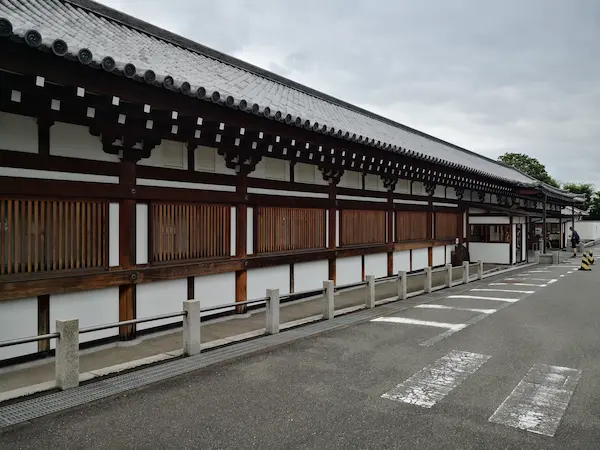Sanjusangendo is a temple of the Tendai sect located in Higashiyama-ku, Kyoto. Its official name is Rengeoin Hondo (蓮華王院本堂). It is not an independent temple, but the nearby Myohoin Temple administer it. Taira no Kiyomori built this long hall in 1164. It was later destroyed by fire, but was restored in 1266.

The name Sanjusangendo is due to the 33 (sanjusan) spaces (gen) between the pillars. The total length of the hall is 120 meters.
There are 1001 statues of the Kannon standing in the hall. Among them, 124 are from the Heian period, the time of the temple’s construction. You cannot take photos in the temple. So the image below is from the temple’s website.

The more than 1,000 statues are specutaclar. It is a must visit.
Nearby spots around Sanjusangendo
Kyoto National Museum is just across the street.
Myohoin Temple, the owner of Sanjusangendo, is not open for the public in most of the time.
The Shoseien Garden is located in the middle of the bustling district close to the Kyoto Station.
Yogen-in Temple has a blood ceiling and cedar door and sliding door paintings by Sotatsu Tawaraya that are a must-see.
Chishakuin Temple, head temple of Chizan School, features a renowned pond garden and houses National Treasure screen paintings.
Related articles:
[…] Myohoin, located in Higashiyama-ku, is a temple that became a monzeki temple in the early Kamakura period. Also Myohoin manages the famous Sanjusangendo. […]
[…] Sanjusangendo (三十三間堂) Yogen-in (養源院) Chishakuin Temple (智積院) Myohoin Temple (妙法院) […]
[…] Shrine is located south of Sanjusangendo and along Higashioji Dori. It is said that the shrine was built by Ex-Emperor Goshirakawa in […]
[…] Temple is one of the temples located near Sanjusangendo. This temple was founded in 989 by Fujiwara no Tamemitsu. Later, Emperor Goshirakawa abdicated in […]
[…] Temple is located near Sanjusangendo and Hojuji Temple. Yogen-in Temple has a blood ceiling and cedar door and sliding door paintings by […]
[…] famous Sanjusangendo temple is located just across the street from the museum entrance. So you can visit there easily from the […]
[…] Imakumano Jinja Shrine is a simulacrum of Hongu Shrine. It is located near Sanjusangendo Temple. […]